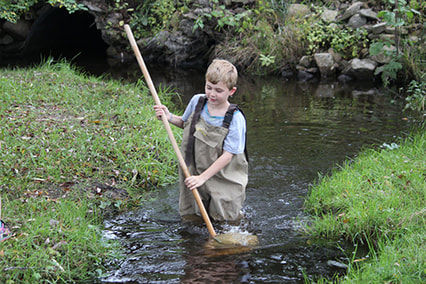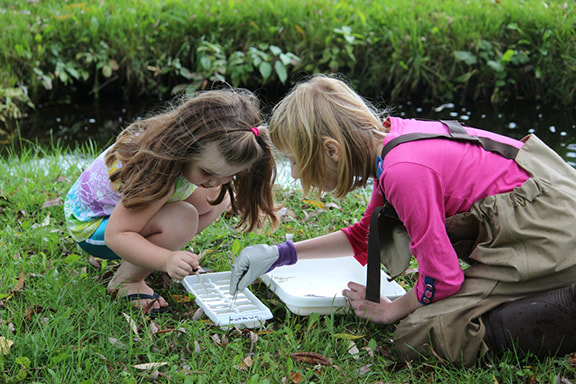Kimberly Creek

Watershed: Mullett Lake Watershed
Length: 8 miles
Headwaters: northwestern Walker Township of Cheboygan County
Mouth: Little Pigeon River, which converges with the Pigeon River near Mullett Lake
Description
Kimberly Creek is a small stream east of Indian River in the middle of Cheboygan County. In response to a large amount of agriculture in its watershed, banks stripped of vegetation for residential development, and a section of the creek flowing through a mining quarry, the Watershed Council added it to the Volunteer Stream Monitoring Program in 2005 to document any effects of these potentially large water quality impacts. What did we find? The waters of Kimberly Creek are pristine and it has excellent water quality. In fact, one of the highest macroinvertebrate scores ever collected by the program was taken downstream of the quarry.
This gives us even more reason to protect this remarkable natural treasure. Sedimentation and nutrient pollution from the activities in the watershed could have the opportunity to negatively impact the creek and its water quality. By using Best Management Practices (BMP’s) and sensible riverbank development, it is up to all of us to protect the health of this amazing creek.
Length: 8 miles
Headwaters: northwestern Walker Township of Cheboygan County
Mouth: Little Pigeon River, which converges with the Pigeon River near Mullett Lake
Description
Kimberly Creek is a small stream east of Indian River in the middle of Cheboygan County. In response to a large amount of agriculture in its watershed, banks stripped of vegetation for residential development, and a section of the creek flowing through a mining quarry, the Watershed Council added it to the Volunteer Stream Monitoring Program in 2005 to document any effects of these potentially large water quality impacts. What did we find? The waters of Kimberly Creek are pristine and it has excellent water quality. In fact, one of the highest macroinvertebrate scores ever collected by the program was taken downstream of the quarry.
This gives us even more reason to protect this remarkable natural treasure. Sedimentation and nutrient pollution from the activities in the watershed could have the opportunity to negatively impact the creek and its water quality. By using Best Management Practices (BMP’s) and sensible riverbank development, it is up to all of us to protect the health of this amazing creek.
Monitoring
Biological monitoring is performed by volunteers in Kimberly Creek each spring and fall as part of the Watershed Council’s Volunteer Stream Monitoring (VSM) Program.
Biological monitoring is performed by volunteers in Kimberly Creek each spring and fall as part of the Watershed Council’s Volunteer Stream Monitoring (VSM) Program.
Additional Resources
Information about Threatened, Endangered, and Special Concern species in this stream’s watershed is available on the Michigan Natural Features Inventory (MNFI) website.
Discharge data for this stream is available online through the Michigan Department of Environmental Quality’s Low Flow Discharge Data Base.
USGS Current Water Data for Michigan provides stream flow conditions.
A wide variety of maps, including Vegetation circa 1800, National Wetlands Inventory, Land Cover Change 1800’s to 1978, Wetland Change 1800’s to 1980, and many other resources for this area are available online in the Michigan Natural Features Inventory (MNFI) Data Resources page.
Learn about safely eating fish from this river in the Michigan Fish Consumption Advisory.
Publications
Volunteer Stream Monitoring 2012
Volunteer Water Quality Monitoring Report (2014)
Information about Threatened, Endangered, and Special Concern species in this stream’s watershed is available on the Michigan Natural Features Inventory (MNFI) website.
Discharge data for this stream is available online through the Michigan Department of Environmental Quality’s Low Flow Discharge Data Base.
USGS Current Water Data for Michigan provides stream flow conditions.
A wide variety of maps, including Vegetation circa 1800, National Wetlands Inventory, Land Cover Change 1800’s to 1978, Wetland Change 1800’s to 1980, and many other resources for this area are available online in the Michigan Natural Features Inventory (MNFI) Data Resources page.
Learn about safely eating fish from this river in the Michigan Fish Consumption Advisory.
Publications
Volunteer Stream Monitoring 2012
Volunteer Water Quality Monitoring Report (2014)




